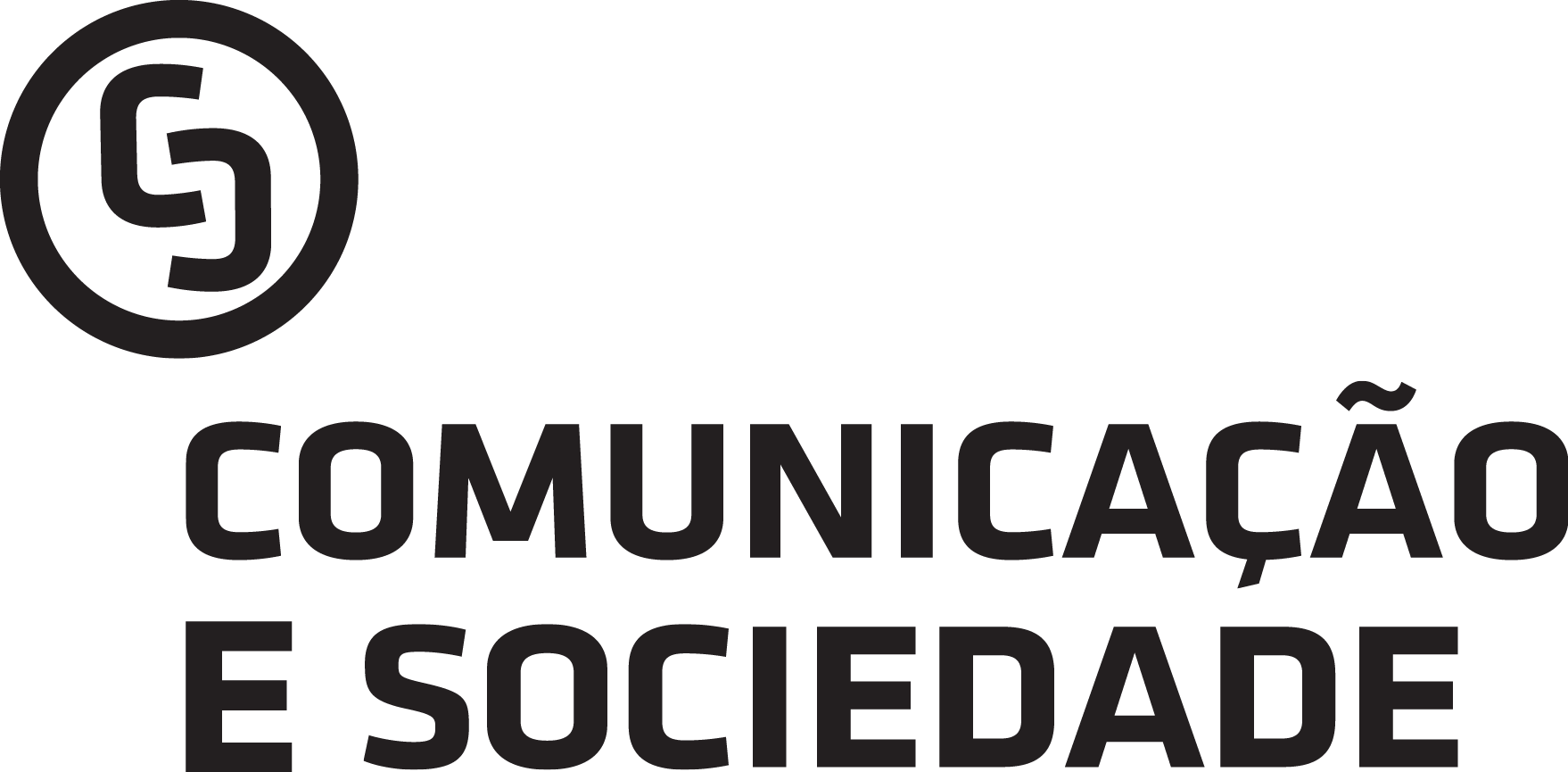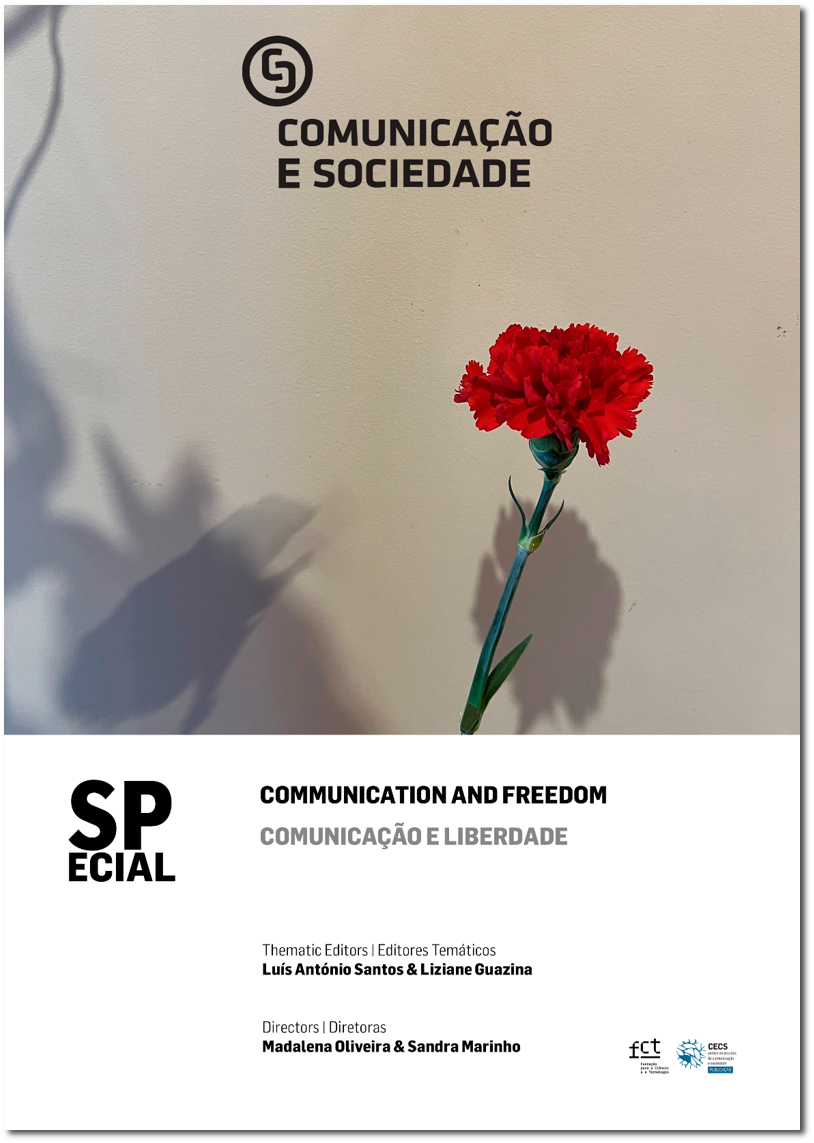“The Conscience of the Syrian Revolution”: Creativity in the Search for Freedom in the Banners of Kafranbel (2011-2018)
DOI:
https://doi.org/10.17231/volesp(2025).5474Keywords:
Kafranbel, Syria, freedom of expression, citizen narrative, mediaAbstract
This paper examines the revolutionary storytelling and communication process of Kafranbel, a town in northern Syria celebrated as “the conscience of the Syrian revolution”. Known for its impactful banners, the town’s production spanned from 2011 to 2018 and featured images of people holding banners with written messages, drawings, and caricatures. These banners were regularly shared on social media, reflecting a nuanced and evolving creative process. This study employs a descriptive and qualitative research methodology to analyze a dataset of images (n = 214) compiled and organized chronologically. Additionally, insights from nine semi-structured interviews conducted in Spanish, English, and Arabic are included in the analysis. These interviews involved residents, witnesses, and experts who have closely followed the uprising, providing a comprehensive understanding of Kafranbel’s communicative efforts.
The findings highlight how Kafranbel’s banners emerged and consolidated as a response to both the Syrian regime’s crackdown and the threat increasingly posed by extremist groups, including the Islamic State of Iraq and Syria (ISIS). The town’s storytelling employed human-centered and persuasive elements, such as the portrayal of children and references to global struggles and icons, to engage both local and international audiences. Patterns in the banners reveal a shift in tone and language choices as the conflict intensified and the town became more desperate for help. The absence of banners during periods of intense bombing underscores the harsh realities faced by the town’s residents, which culminated in the town’s silence following its recapture by the Syrian regime and the assassination of journalist Raed Fares by ISIS-affiliated gunmen. This study fills a significant gap in existing research, offering a detailed analysis of Kafranbel’s unique communication strategy within the broader narrative of the Syrian uprising.
Downloads
References
Abboud, S. N. (2018). Syria: Hot spots in global politics. Polity Press.
Adi, M.-M. (2014). The usage of social media in the Arab Spring. LIT Verlag.
Ahmad, A. R., & Hamasaeed, H. H. (2015). The role of social media in the Syrian Uprising. Journal of Economic Development, Environment and People, 4(2), 39–48. https://doi.org/10.26458/jedep.v4i2.105
Al Natour, M. (2022). Home, identity, and place in Syrian literature: Maha Hassan's Drums of Love and Ghassan Jubbaʿi's Qahwat Al-General. Contemporary Levant, 7(1), 66–80. https://doi.org/10.1080/20581831.2022.2058717
Allaf, R. (2012, January 17). Syrian women, backbone of the revolution. Media Monitors Network. https://www.mediamonitors.net/syrian-women-backbone-of-the-revolution/
Alshab, A. (2021). Centralization and decentralization in Syria: Comparison of before and after 2011 [Master's thesis, Hasan Kalyoncu Üniversitesi].
Alvarez-Ossorio, I. (2012). Syria's struggling civil society and the Syrian uprising. Middle East Quarterly, 19(2), 23–32.
Álvarez-Ossorio, I. (2017). Siria: Revolución, sectarismo y Yihad. Los Libros de la Catarata.
Álvarez-Ossorio Alvariño, I. (2015). El enroque autoritario del régimen sirio: De la revuelta popular a la guerra civil. Revista CIDOB d'Afers Internacionals, (109), 157–176.
Álvarez-Ossorio Alvariño, I., & Nachawati Rego, L. (2023). Dinámicas de resistencia civil en Siria desafiando al régimen autoritario. In C. Pérez Beltrán (Ed.), Dinámicas de protestas en el mundo árabe: Desafiando a los regímenes autoritarios (pp. 279–308). Editorial Universidad de Granada.
Assad: The end of war on Syria is imminent. (2018, October 4). Roya News. https://en.royanews.tv/news/56959
Awad, S. H., & Wagoner, B. (Eds.). (2018). Street art of resistance. Palgrave Macmillan.
Bachleitner, K. (2022). Legacies of war: Syrian narratives of conflict and visions of peace. International Studies Quarterly, 57(1), 43–64. https://doi.org/10.1177/00108367211032691
Bachleitner, K., & Matthiesen, T. (2021). Introduction to themed section on 'Belonging to Syria: National identifications before and after 2011'. Nations and Nationalism, 28(1), 117–124. https://doi.org/10.1111/nana.12784
Badawi, H. (2023). Pro-Syrian regime versus anti-regime outlets: A comparative critical discourse analysis. International Journal of Management and Humanities, 9(10), 8–14. https://www.doi.org/10.35940/ijmh.J1619.0691023
Barthes, R. (1977). Image-music-text (S. Heath, Trans.). Hill and Wang. (Original work published 1964).
Ben Moussa, M. (2013). From Arab street to social movements: Re-theorizing collective action and the role of social media in the Arab Spring. Westminster Papers in Communication and Culture, 9(2), 47–68. https://doi.org/10.16997/wpcc.166
Bonnefoy, L., & Louer, L. (2021). Le Printemps Arabe dans la péninsule Arabique. CERI - Centre de Recherches Internationals, (4). https://doi.org/10.4000/cy.2803
Brown, H., Guskin, E., & Mitchell, A. (2012). The role of social media in the Arab uprisings. Pew Research Center.
Brym, R., Godbout, M., Hoffbauer, A., Menard, G., & Zhang, T. H. (2014). Social media in the 2011 Egyptian uprising. The British Journal of Sociology, 65, 266–292. https://doi.org/10.1111/1468-4446.12080
Camps-Febrer, B. (2013). Political humor as a confrontational tool against the Syrian regime; a study case: Syria, 15th March 2011 – 15th May 2012. International Catalan Institute for Peace. https://doi.org/10.2139/ssrn.2205200
Couldry, N. (2008). Mediatization or mediation? Alternative understandings of the emergent media environment. New Media & Society, 10(3), 315–336. https://doi.org/10.1177/1461444808089414
Crotty, M. (1998). The foundations of social research: Meaning and perspective in the research process. SAGE.
Della Ratta, D. (2018). Shooting a revolution: Visual media and warfare in Syria. Pluto Press.
Dibo, M. (2013, December 21). Kafranbel: The conscience of the revolution. SyriaUntold. https://syriauntold.com/2013/12/21/kafranbel-the-conscience-of-the-revolution/
Durand, J. (1982). Retórica e imagen publicitaria (M. T. Cevasco, Trans.). In C. Metz, U. Eco, J. Durand, G. Péninou, V. Morin, S. Du Pasquier, P. Fresnault-Deruelle, C. Metz, J. Bertin, L. Marin, & J.-L. Schefer (Eds.), Análisis de las imágenes (pp. 81–115). Ediciones Buenos Aires. (Original work published 1970)
El Khannoussi, J. (2012). Factores internos y externos de la revolución siria. Revista Internacional de Pensamiento Político, 7, 27–41.
El Omari, H., El Fakir, M., & Şaban, N. (2016). The political role of local councils in Syria: Survey results. Omran Center for Strategic Studies.
Espiritusanto, O., & Rodríguez, P. G. (2011). Periodismo ciudadano: Evolución positiva de la comunicación. Ariel; Fundación Telefónica.
Geertz, C. (1973). The interpretation of cultures: Selected essays. Basic Books.
Ghannam, J. (2011). Digital media in the Arab world: The impact of social media on political change (Arab Social Media Report, 10-25-11). Brookings Institution.
Gitlin, T. (1980). The whole world is watching: Mass media in the making and unmaking of the new left. University of California Press.
Graham-Harrison, E. (2018, November 23). Influential Syrian activist Raed Fares gunned down in Idlib. The Guardian. https://www.theguardian.com/world/2018/nov/23/influential-syrian-activist-raed-fares-gunned-down-in-idlib
Griswold, E. (2014, December 4). Radio-free Syria. The New York Times. https://www.nytimes.com/2014/12/07/magazine/radio-free-syria.html
Guedes, A. M., & Costa, R. D. (Eds.). (2019). O “grande Médio Oriente” alargado (Vol. 1). Instituto Universitário Militar.
Hanano, A. (2013, October 18). Rising up and rising down: In Syria's little town that could, the death and resurrection of the witty, profane campaign to show the world the tragedy of civil war. Foreign Policy. https://foreignpolicy.com/2013/10/18/rising-up-and-rising-down/
Howard, P. N., Duffy, A., Freelon, D., Hussain, M. M., Mari, W., & Maziad, M. (2011). Opening closed regimes: What was the role of social media during the Arab Spring? https://doi.org/10.2139/ssrn.2595096
Hubbard, B. (2018, November 23). Activist who used humor to highlight war is gunned down in Syria. The New York Times. https://www.nytimes.com/2018/11/23/world/middleeast/syria-fares-activist-killed.html
Hurtado, L. M. (2014, January 6). Asalto rebelde al feudo de la milicia yihadista ISIS en Siria. El Mundo. https://www.elmundo.es/internacional/2014/01/06/52cb0e0522601dba098b457a.html
Jurgenson, N. (2012). When atoms meet bits: Social media, the mobile web and augmented revolution. Future Internet, 4(1), 83–91. https://doi.org/10.3390/fi4010083
Kachee, A. (2013). Trajectoires de villes syriennes dans la révolution. Vers l'émergence d'une citoyenneté? Confluences Méditerranée, (85), 103–113.
Karadjis, M. (2019). Review of the book State Propaganda in Syria: From War Crimes to Pipelines, by N. Ahmed. State Crime Journal, 8(1), 167–170.
Karim, S., & Islam, M. N. (2016). Syrian crisis: Geopolitics and implications. BIISS Journal, 37(2), 107–132. https://biiss.org/publication-view/1350356258732904448
Khalaf, R. (2015). Governance without government in Syria: Civil society and state building during conflict. Syria Studies, 7(3), 37–72.
Khamis, S., Gold, P. B., & Vaughn, K. (2012). Beyond Egypt's "Facebook Revolution" and Syria's "YouTube Uprising:" Comparing political contexts, actors, and communication strategies. Arab Media and Society. https://www.arabmediasociety.com/beyond-egypts-facebook-revolution-and-syrias-youtube-uprising-comparing-political-contexts-actors-and-communication-strategies/
Khondker, H. H. (2011). Role of the new media in the Arab Spring. Globalizations, 8(5), 675–679. https://doi.org/10.1080/14747731.2011.621287
Lynch, M., Freelon, D., & Aday, S. (2014). Syria in the Arab Spring: The integration of Syria’s conflict with the Arab uprisings, 2011–2013. Research & Politics, 1(3). https://doi.org/10.1177/2053168014549091
Magnarella, P. J. (2017). Middle East and North Africa: Governance, democratization, human rights. Routledge.
McLuhan, H. M., & Fiore, Q. (1967). The medium is the massage. Bantam Books.
Pedersen, M. A., Albris, K., & Seaver, N. (2021). The political economy of attention. Annual Review of Anthropology, 50, 309–325. https://doi.org/10.1146/annurev-anthro-101819-110356
Raed Fares: Syria radio host shot dead in Idlib. (2018, November 24). BBC. https://www.bbc.com/news/world-middle-east-46320355
Ramírez Díaz, N. (2016). Against all odds: Defining a revolutionary identity in Syria. In A. Douai & M. Ben Moussa (Eds.), Mediated identities and new journalism in the Arab world (pp. 83–99). Springer.
Ruiz de Elvira, L. (2011). Siria, el largo camino hacia la revolución. Revista de Estudios Internacionales Mediterráneos, 10, 33-46. Universidad Autónoma de Madrid. Taller de Estudios Internacionales Mediterráneos. https://hdl.handle.net/10486/670294
Saleh, Y. A. H. (2017). The impossible revolution: Making sense of the Syrian tragedy. Oxford University Press.
Scartozzi, C. M. (2015). Assad's strategic narrative: The role of communication in the Syrian civil war. Contemporary Review of the Middle East, 2(4), 313–327. https://doi.org/10.1177/2347798915610037
Simon, H. (1971). Designing organizations for an information-rich world. Johns Hopkins Press.
Sylvester, C. (Ed.). (2015). Masquerades of war. Taylor & Francis.
Tufekci, Z., & Wilson, C. (2012). Social media and the decision to participate in political protest: Observations From Tahrir Square. Journal of Communication, 62(2), 363–379. https://doi.org/10.1111/j.1460-2466.2012.01629.x
United Nations. (2021, March 12). Syria war: Average of one child injured or killed every eight hours over the past 10 years. https://news.un.org/en/story/2021/03/1087212
Wall, M. (2015). Citizen journalism: A retrospective on what we know, an agenda for what we don't. Digital Journalism, 3(6), 797–813. https://doi.org/10.1080/21670811.2014.1002513
Wedeen, L. (2013). Ideology and humor in dark times: Notes from Syria. Critical Inquiry, 39(4), 841–873. https://doi.org/10.1086/671358
Wengraf, T. (2001). Qualitative research interviewing: Biographic narrative and semi-structured methods. SAGE.
Wessels, J. I. (2015). Syrian masquerades. In C. Sylvester (Ed.), Masquerades of war (pp. 95–117). Taylor & Francis.
Yassin-Kassab, R., & Al-Shami, L. (2016). Burning country: Syrians in revolution and war. Pluto Press.
Yin, R. K. (2014). Case study research: Design and methods. SAGE.
Zarwan, E. (2005). False freedom: Online censorship in the Middle East and North Africa. Human Rights Watch. https://www.hrw.org/report/2005/11/14/false-freedom/online-censorship-middle-east-and-north-africa
Downloads
Published
How to Cite
Issue
Section
License
Copyright (c) 2025 Leila Nachawati Rego

This work is licensed under a Creative Commons Attribution 4.0 International License.
Authors own the copyright, providing the journal with the right of first publication. The work is licensed under a Creative Commons Attribution 4.0 International License.












